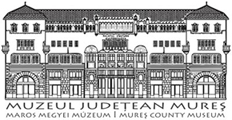Marisia - Maros Megyei Múzeum Évkönyve 35/2. (2015)
Zoology
The growth ofhalophilic microorganisms in the presence of waste glycerol and its conversion in glycidol Results and discussions The water sample taken from salt Lake Balta Alba which is located at the limit between the counties Buzau and Braila, in the Romanian plain at approximately 170 km East of Bucharest, is characterized by chloride content varying from 3.5 g/1 (in the water sample taken after strong rain) until to 16 g/1 (in the water sample taken in the absence of rain for more than three months). The soil surrounding the lake harbored around 14 g/1 chloride, and the sapropelic mud from the lake 16 g/1. The pH is around 8.2-8.3. According to these data the lake could be considered a saline lake. In these samples were identified a large number of colony forming units, namely 3.5 x 105 per milliliter in water taken after rain and 2.6 x 105 in soil surrounding the lake. From these numbers, few strains were selected randomly and further investigated for their ability to use waste glycerol and summary characterized from microbiological point of view. The results showed in Table 1 revealed that selected strains are able to grow on media containing traces of sodium until to 4M NaCl. The optimum concentration of NaCl for growth in all tested strains was around 1.7-2M. The investigated strains show the ability to grow on culture media supplemented with 0.004% sodium deoxycholate but cannot grow on media containing 0.002% chloramphenicol. Catalase test was positive for four investigated strains and negative for other two (strains 1-2 and 4—2; Table 1). The color of the strains selected in this study, varied from white, cream to beige and pink (Figure 1). Excepting strain 5—1, isolated from the soil surrounding the salt lake, the remaining five have negative Gram staining. According to these preliminary data, it should be considered that the investigated strains are halotolerant (strains 1—2, 1—9, 2—1 and 5—1) or moderately halophilic (strains 3—8 and 4—2). Fig. 1: Pigmentation of the investigated strains on culture media containing 1M (a), 1.7M (b) and 2M NaCl (c) Table 1 - Summary characterization of selected bacterial strains; *0 M = sodium traces from culture media components; A = Range of NaCl (M); В = Morphology; C = Gram staining; D = Pigmentation; E = Growth on media with bile salts; F = Growth on media with chloramphenicol; G = Catalase test; + = positive answer; — = negative answer Strain I A‘ I В I C I D E F I G 1-2_______0-3_____cocci_______-________beige_____ + -1— 9_0-2_____cocci______-_________white_____ + + 2— 1__0-3_____cocci_______-________beige_____________+______ - + 3— 8_______1—3______cocci______-_______weak pink + + 4— 2 1—3 cocci - beige__ + -5— 1__0-4_____cocci + cream + + 69
